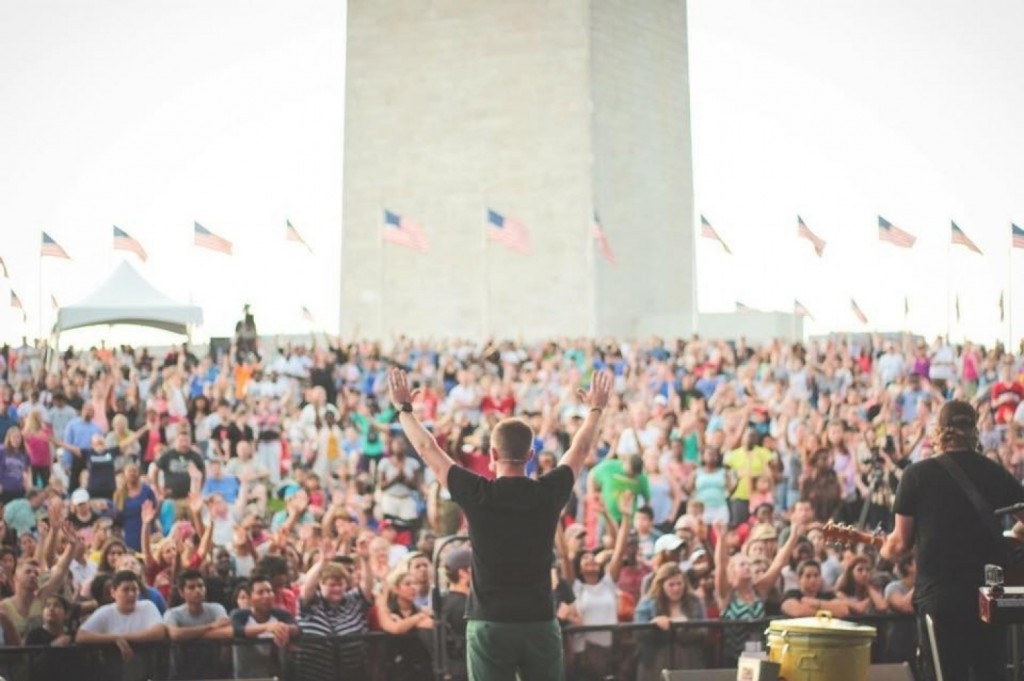
Revivals are an integral part of evangelical and charismatic Christianity, but the idea of what makes for revival is undergoing strain as evangelicalism grows more diverse and has less of a public presence in American society. In the Washington Post (July 13), Michelle Bornstein reports on one of the largest modern day revival events, Together, which gathered thousands of evangelicals at the Washington Monument and had “heavy social media branding, major music from hip-hop to folktronica to hard rock, and popular evangelists who know to keep their messages TED-talk short.” The event was the brainchild of 34-year-old evangelist Nick Hall, who wanted to bring together evangelicals in a public venue, just as Billy Graham crusades had done in the past. But today such a gathering had to deal with contemporary quandaries, such as how it would reflect evangelicals’ ethnic and theological diversity and the growing leadership role of evangelical women; whether Catholics, even such a prominent one as Pope Francis, should participate (the pontiff spoke to the crowd via a video connection); and, more pertinently, whether this public presence of evangelicals would advance evangelism or Christian influence. Bornstein reports that about half of the speakers for Together are non-white and one-third are women.
Bornstein cites church growth specialist Ed Stetzer as saying that Together is not like the Graham crusades in that the latter emphasizes its mission to convert non-Christians while the Washington event appealed to Christians for the need to be “reenergized and refocused.” The ways in which revival can mean different things to different Christians and has become decentralized is evident in the July issue of Charisma magazine, which is devoted to reports on recent outbreaks of revival in the U.S. and Latin America. In the past, the magazine has tended to conflate charismatic Christians gathering together to pray for revival with revival itself. But in this issue, the magazine reported that full-fledged revival, with miracles, salvations, and Christian renewal, is apparent in several regions and countries. Editor Jennifer LeClaire writes that “after decades of fervent prayer, identificational repentance and prophetic intercession, revival fire is breaking out in American cities.” LeClaire finds these outbreaks in places as disparate as San Diego (centered around the Heart of God Church), Seattle (based at the Seattle Revival Center), and Appalachia (in the Churches of God)
What LeClaire calls the “West Coast Rumble” is marked by “signs and wonders” such as alleged healings and the instantaneous appearances of gold fillings, while in West Virginia, the revivals are characterized by “mass salvations,” enough so that the secular media has taken notice. Evangelist James Goll says that “Eventually there will be so many different pockets and centers opening up that it will be impossible to track it all. It will not be like the past when there was primarily one location where the nation or the world came. …There would be so many hubs opening up and so many new things happening that this movement will not be one ministry centered, not one city or region centered, not one apostolic center highlighted or one leader centered. But it all begins with someone and somewhere.” The accompanying report on revival in Latin America by LeClaire is somewhat different, tracing it to one church, World Headquarters of Revival in Bogota, Columbia, as it spreads to Peru and even Uruguay, a country long resistant to the Pentecostal surge. On a different note from her report on the U.S., she finds that church planting as well as the call for societal and even political change have been important parts of the Latin American revival.
(Charisma, 600 Rhinehart Rd., Lake Mary, FL 32746)